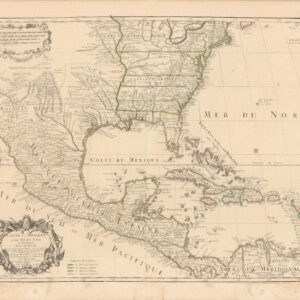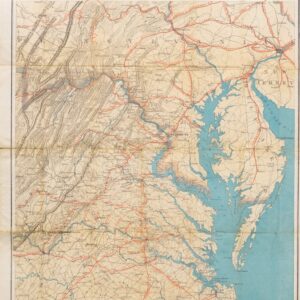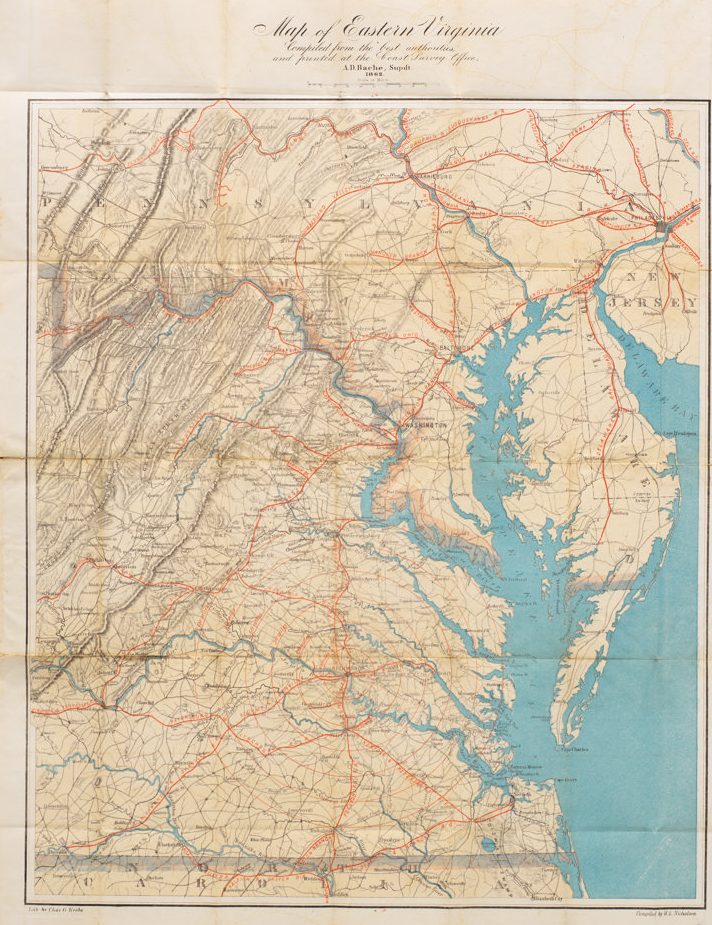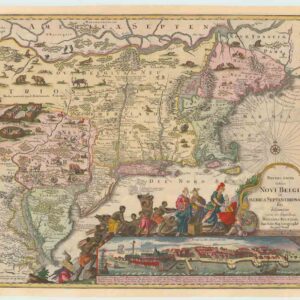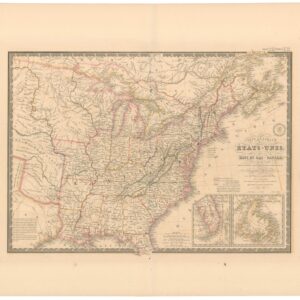Olmsted and Vaux’s 1871 plan of Central Park.
Map of the Central Park. April 20th 1871
Out of stock
Description
Frederick Law Olmstead and Calvert Vaux’s oblong plan of Central Park under construction is a representation of one of America’s greatest urban development projects in the 19th century. Its subject was a milestone in the conceptual development of a modern city and the map stands as a testimony to the genius of its designers.
This map of Central Park in New York has become an icon in Big Apple cartography. Compiled by the two great American landscape architects of the 19th century – Frederick Law Olmsted and Calvert Vaux – this plan of Central Park was initially issued in the Annual Report of the Board of Commissioners of the Central Park in April 1871. The map was compiled at a scale of 400 feet to an inch and printed as an oblong horizontal plan with fine details that define and delineate the park’s features.
Being a representation of New York’s most significant green space, Vaux and Olmsted naturally settled on printing it as a color lithograph. This allowed substantial elements like roads and trails, reservoirs, and buildings to stand out clearly on the map and gave place to more subtle details, like rocks and groves of trees. The park’s topography is indicated by dense hatching.
The map depicts Central Park in a state of near completion, and it was because this massive project was drawing to a close, the map was issued publicly. The printed map was presumably based on an original pen and ink drawing that Olmsted, and Vaux submitted as their Greensward Plan for Central Park in early 1858 (the original is held in the Arsenal, an archive for New York City Department of Parks). The Greensward Plan proposal took the concept to a new level after the initial revamping of the park, which had opened to the public the year before, with unsatisfying results (see context section below).
While Vaux and Olmsted’s 1858 plan constituted a superb development, a comparison between the published plan and their original 1858 manuscript reveals that several significant concepts were altered during the thirteen years it took to realize this plan, and dramatic new ideas were introduced. This was probably also why a new plan must be drawn up and published. The grand project was finally ending, and the men behind it wanted to share their updated vision and expectations with the public.
Context is Everything
Central Park is the most visited urban park in the United States (42 million p.a. in 2016) and the fifth-largest park in New York City. It is located in Manhattan, between the Upper West and Upper East Sides, and covers a whopping 843 acres (341 ha) of prime urban real estate. It came into being through an act passed by the New York City Common Council in July 1853. This allowed for the construction of a large public park in Manhattan, which was to be bounded by 59th and 106th Streets to the north and south and by Fifth and Eighth Avenues to the east and west. When construction began in 1853, the large area in central Manhattan selected for this massive makeover was the site of neglect and squalor. Contemporaneous reports describe the area as littered with rubbish and make-shift squatters’ shacks.
The initial revamping took about four years, and in 1857, the first portions of the new Central Park opened to the public. But it was still not the oasis that the city council had been envisioning, partly because it proved difficult to rid the area of its previous inhabitants, which disallowed an atmosphere of safety and tranquility. In 1858, a young British architect (Vaux) and his apprentice, an American farmer and journalist (Olmsted), submitted their plan for a massive overhaul of the park, transforming it into a ‘pastoral oasis for the toiling masses.’
The key concept for which the pair would become rightfully famous considered the qualities of the landscape and how a visitor’s experience could be streamlined and enhanced. As such, they are considered by many as the fathers of landscape architecture. After their initial success, Vaux and Olmsted were charged with the planning and construction of several famous parks on the East Coast, including Prospect Park in Brooklyn, Cadwalader Park in Trenton, and Reservation Park at Niagara Falls.
Once they received the commission, Vaux and Olmsted set to work immediately. Construction was not completed until 1873, two years after this map was published. Still, by 1871, the park’s landscape began taking on many of the characteristics it would eventually become famous for.
In many ways, what made Vaux and Olmsted so incredibly successful was their holistic view of landscapes as qualitative entities. Transforming the terrain into naturally appearing pastoral woodlands was hard enough, but the real accomplishment was the integrated design of all its constituent elements. This was a ‘Gesamtkunstwerk’ long before such a notion existed. Everything, from the selection of tree species to the design of countless architectural additions like tunnels, bridges, arches, stairways, fountains, benches, lamp posts, gates, and fences, was part of a master plan. Indeed, Olmsted formally gave himself the title of artist and insisted on seeing the enormous project as constituting a single work of art, one he was mandated to create.
Cartographer(s):
Calvert Vaux (December 20, 1824 – November 19, 1895) was an English architect, horticulturalist, and landscape designer, who emigrated from London to New York in 1850 in order to partner up with Andrew Jackson Downing, a prominent architect of elite residences based in New York. Seven years later, Vaux created a new partnership with his protégé, Frederick Law Olmsted, to create the winning design for New York City’s Central Park.
Following this initial success, Vaux designed and created dozens of parks across the northeastern United States. Among his most innovative contributions was envisioning the importance of public parks in the wake of America’s massive and rapid industrialization. The solution, Vaux thought, was the integration of man-made components like architecture and infrastructure with the organic harmony of nature. The road to achieving this integration was achieved through a comprehensive and holistic design scheme.
Frederick Law OlmstedFrederick Law Olmstead (April 26, 1822 – August 28, 1903) was an American landscape architect, farmer, journalist, and public administrator. He is considered the father of landscape architecture due to his uncompromising and holistic approach to designing landscapes. He won many of his most famous commissions with his British partner and mentor, Calvert Vaux. Their first project was Central Park, which was deemed a huge success and led to many other commissions to design and construct urban parks.
Condition Description
Backed on archival paper with minor visible repairs.
References
